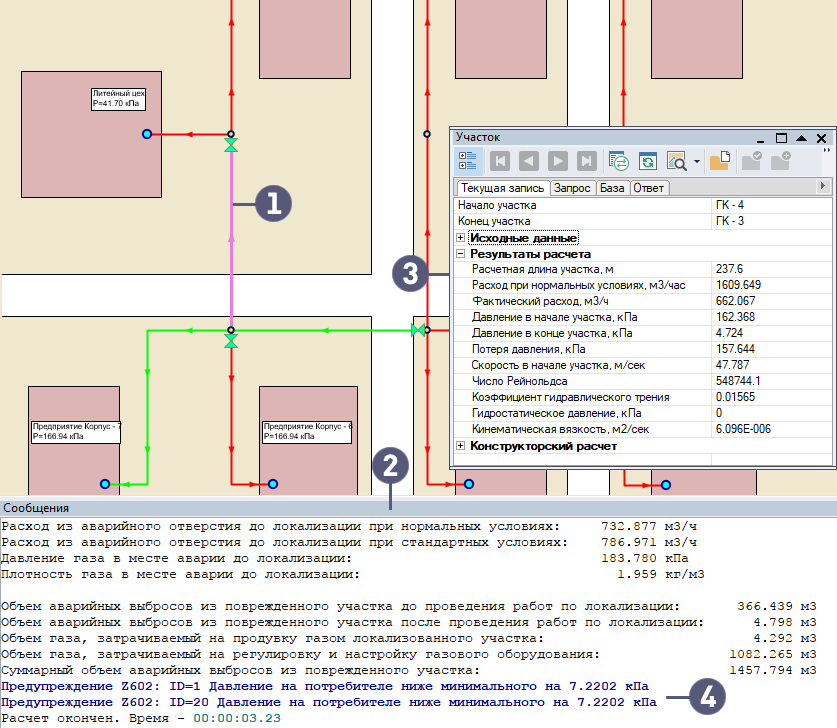The purpose of calculating gas emissions
ZuluGaz Online Help « Calculating the volume of natural gas during an accidental release»
Determine the volume of natural gas during accidental releases from external gas distribution and gas supply networks.
The results of these calculations include:
- a list of pipes isolated during an emergency response
- total volume of accidental emissions
- gas flow rates in gas network pipes, taking into account accidental emissions
- pressure at pipe junctions, taking into account accidental emissions
- gas supply mode, normal or including disruptions
The calculations are performed in accordance with the guidelines provided in GAZPROM GAS DISTRIBUTION 12.2.2-2-2015 «Procedure for determining the volume of natural gas during accidental releases»
As a result of these calculations, the program determines a group of isolated pipes (1). Upon repeated completion of automatic simulation modeling, the total volume of accidental emissions (2), is calculated, which consists of the following variables:

- V – a total volume of accidental emissions, m3
- Vа – a volume of accidental emissions from a damaged pipe of a gas network before performing emergency response procedures, m3
- Vп – a volume of accidental emissions from a damaged pipe of a gas network after performing emergency response procedures, m3
- Vпз – a volume of gas used to purge a gas network pipe contained during the accident, m3
- Vрег – – a volume of gas used to set up and configure gas equipment at gas pressure regulator stations, m3.
The final hydraulic calculation takes into account the flow rate of accidental emissions from the damaged gas network pipe; the results of the hydraulic analysis and modeling are saved to tables by network element (3).
Additionally, the calculations are used to determine a gas supply mode , normal or including disruptions (4). In the event that normal gas supply is disrupted, the program determines a list of consumers for disconnection and recalculates accidental emissions without them.

This module utilizes simulation modeling; a license is required.





